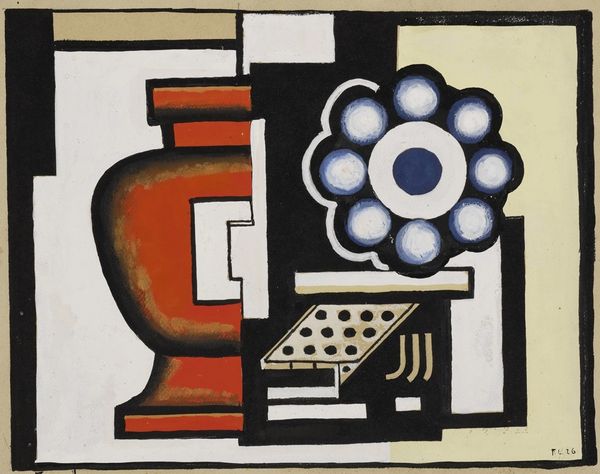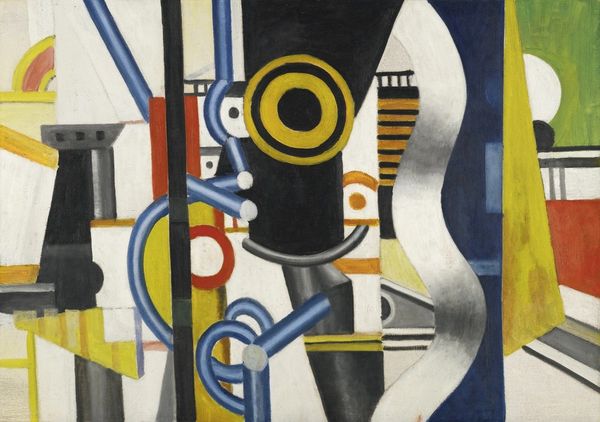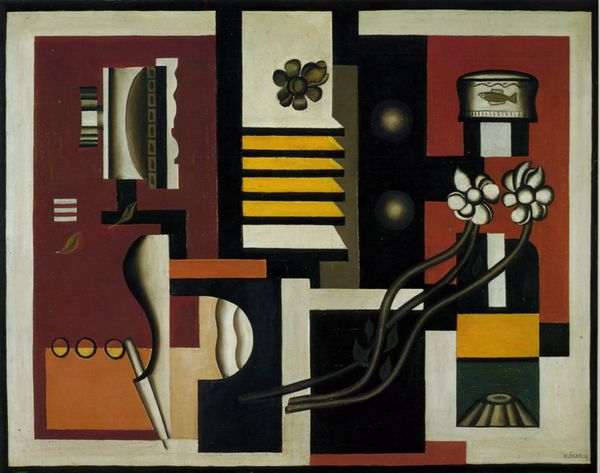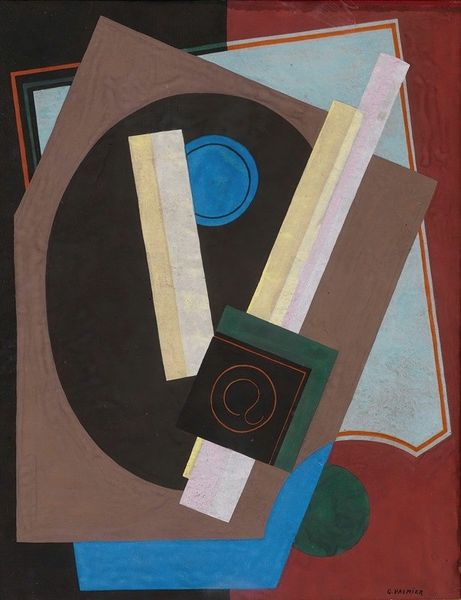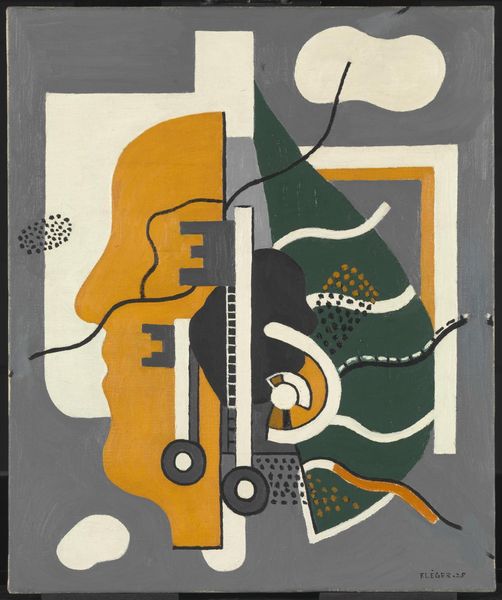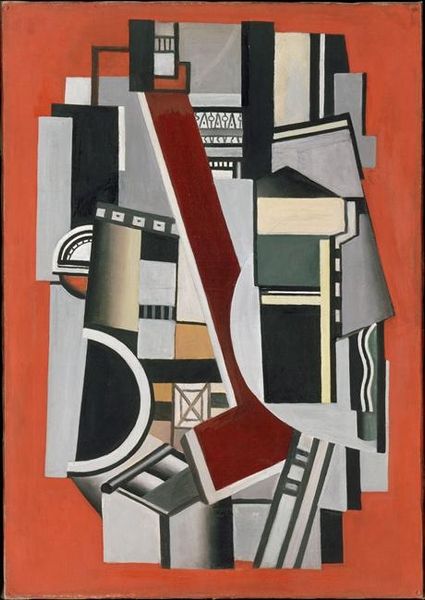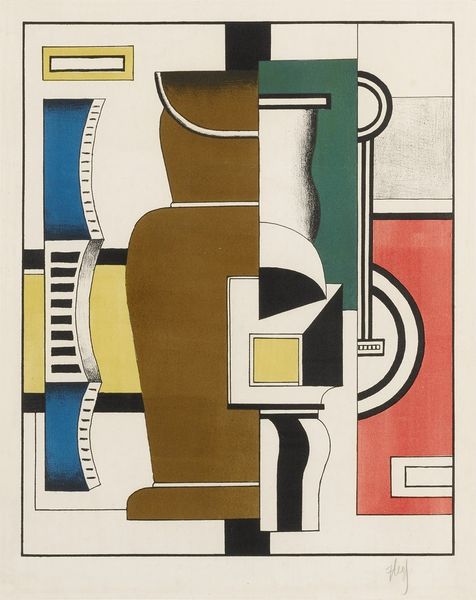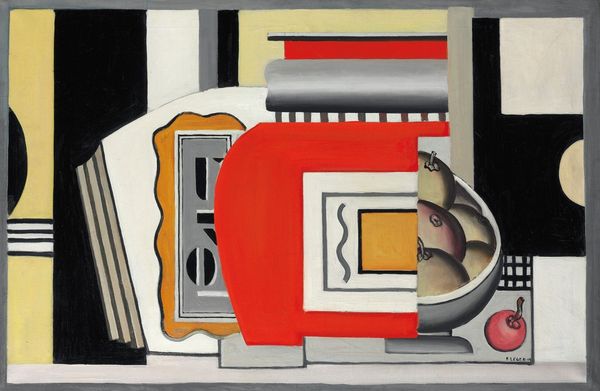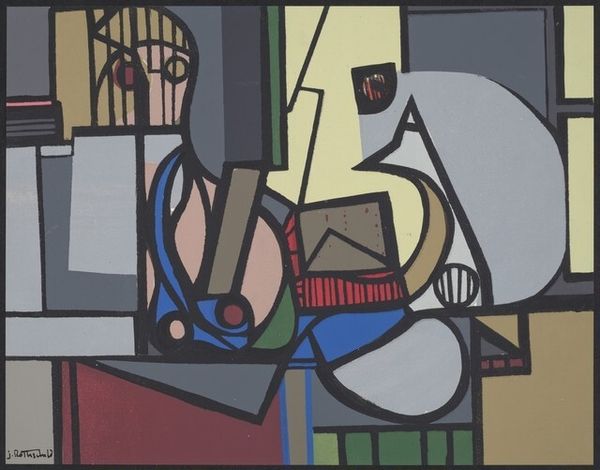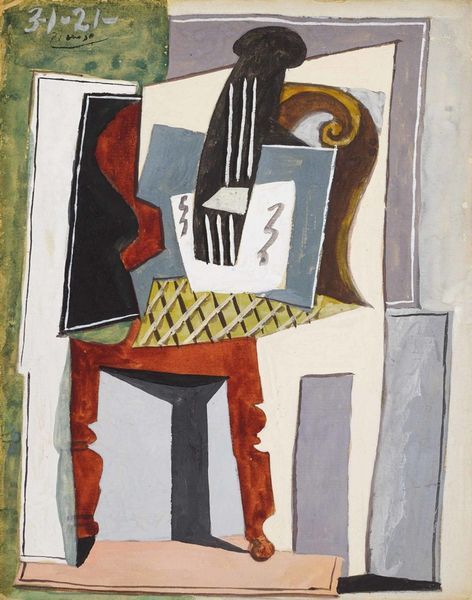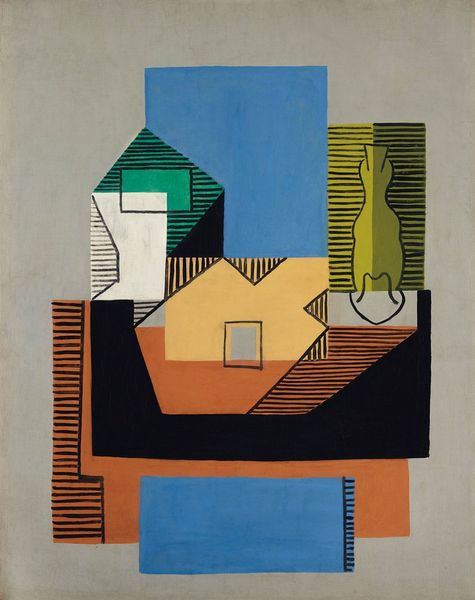
painting, oil-paint
#
portrait
#
cubism
#
painting
#
oil-paint
#
geometric
#
expressionism
#
abstraction
#
modernism
Copyright: Modern Artists: Artvee
Editor: Here we have Fernand Léger’s "Le Profil," painted in 1926 using oil paints. The composition strikes me as very fragmented, almost like looking at different parts of a machine, or maybe a deconstructed portrait. What do you see in this piece? Curator: This fragmented composition speaks volumes about the anxieties of the interwar period and Léger's relationship to modernity. Consider how traditional portraiture aimed to capture likeness and status. Here, Léger dismantles that, reducing the figure to geometric forms and mechanical components. Editor: So, it's less about the individual and more about… the impact of industry, maybe? Curator: Precisely. Léger was fascinated by the dynamism of the machine age. The painting, shown in galleries in Paris at that time, can be interpreted as a comment on the dehumanizing aspects of mass production, with the "profile" being absorbed and reshaped by technology. Notice how the flat planes and bold colours remove all traces of personality from the subject. Do you see how the geometric forms contrast and compete for the viewer's attention? Editor: Definitely. The sharp lines and the mechanical shapes almost overshadow the human form. Curator: That’s right. He positions industrial forms equal to, or perhaps even more prominent than, the human. In many ways, the "profile" almost disappears in a field of machine parts. By portraying his subjects in this way, Léger challenged the established ideas of what made someone or something "worthy" of portraiture in that socio-political time. Editor: I never considered that portraiture itself could be a political statement. Thanks! Curator: It reflects how art actively engaged with the societal shifts and the anxieties surrounding modernity at that time.
Comments
No comments
Be the first to comment and join the conversation on the ultimate creative platform.

